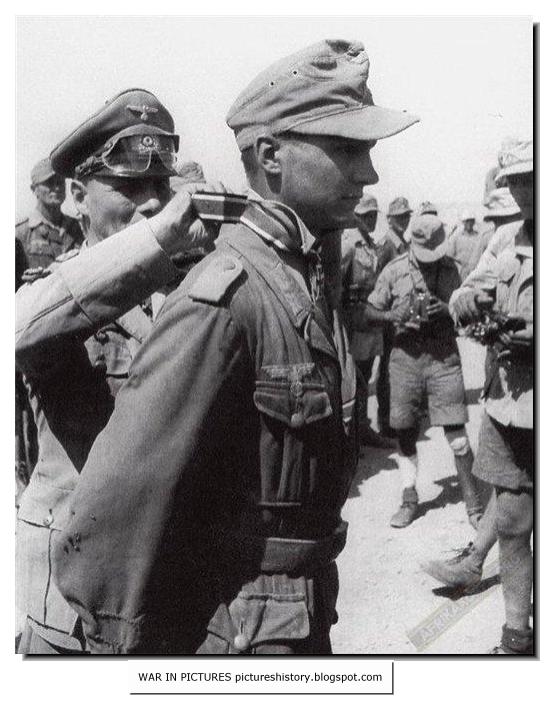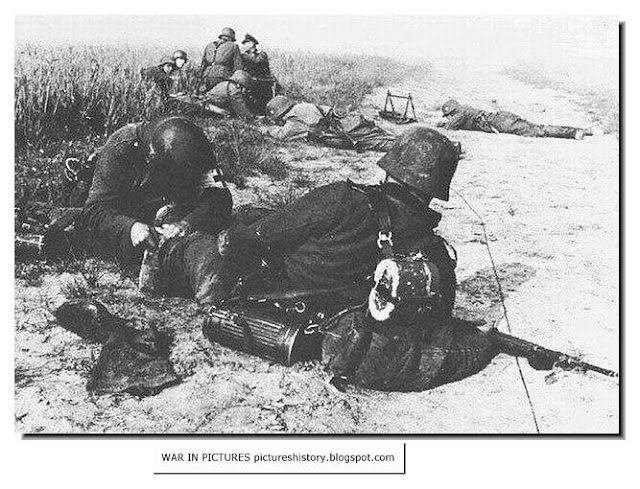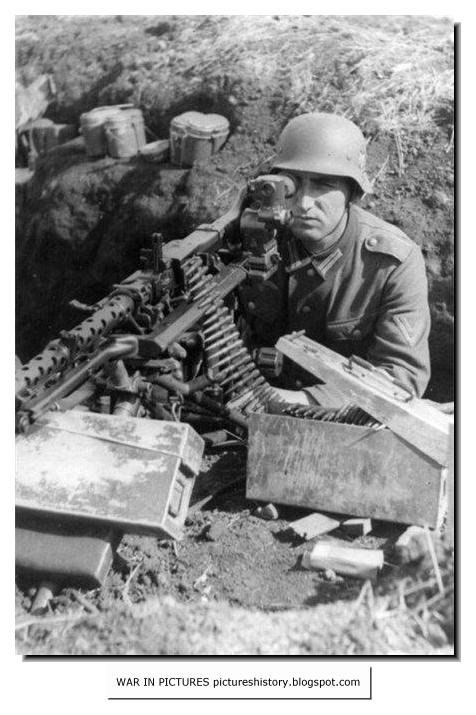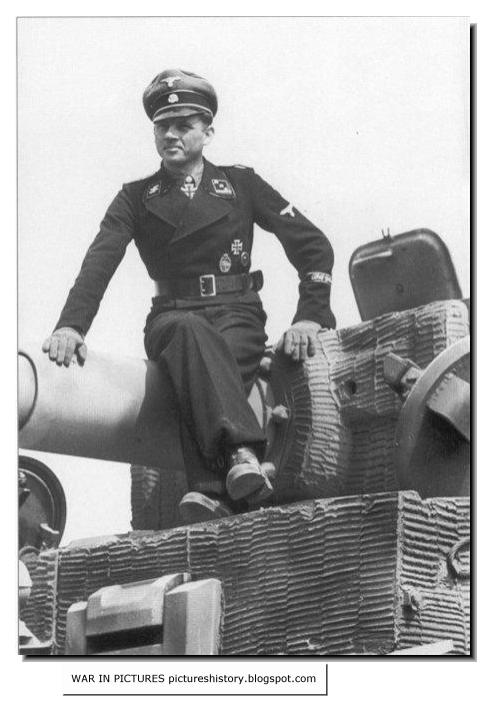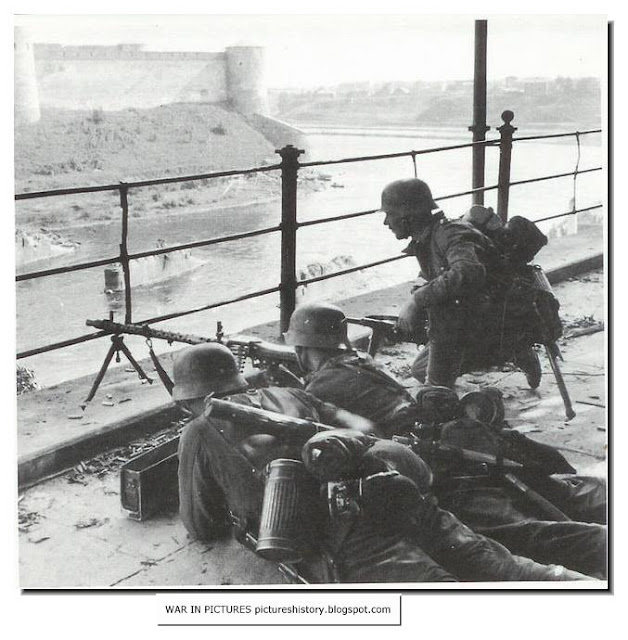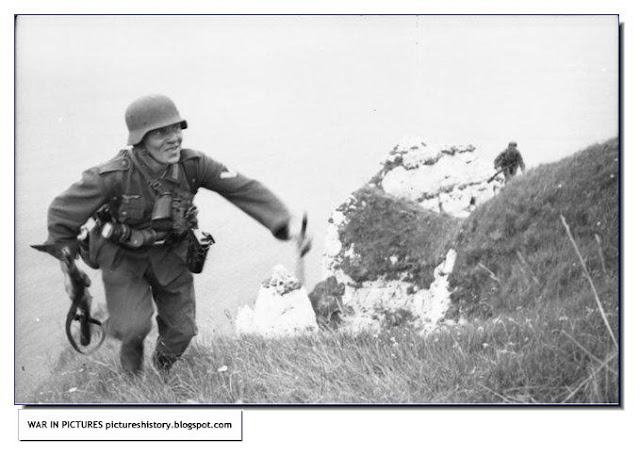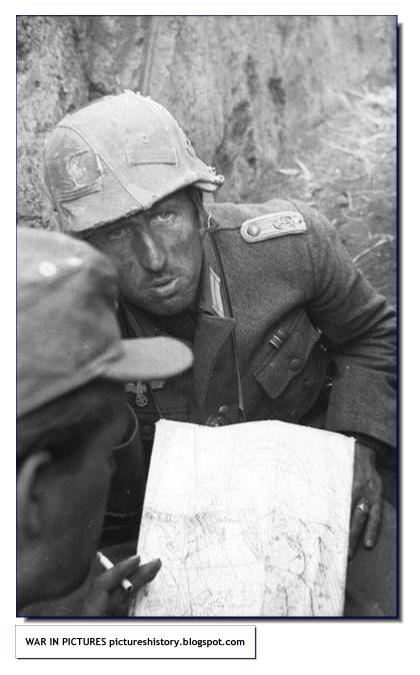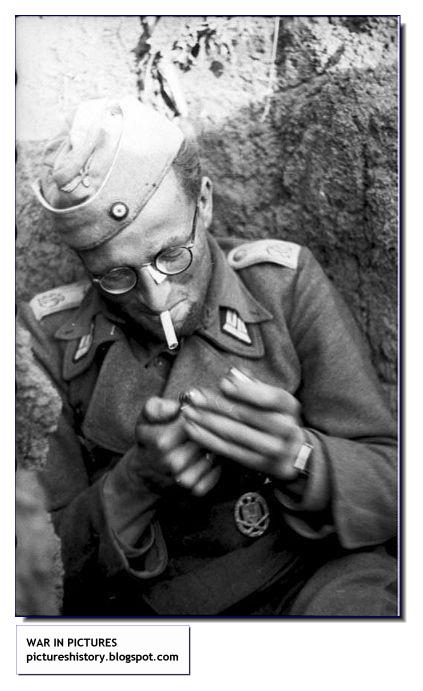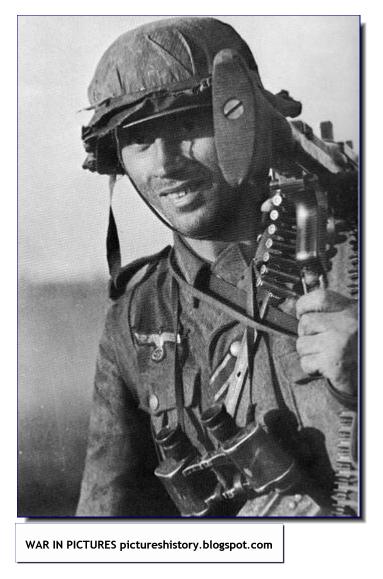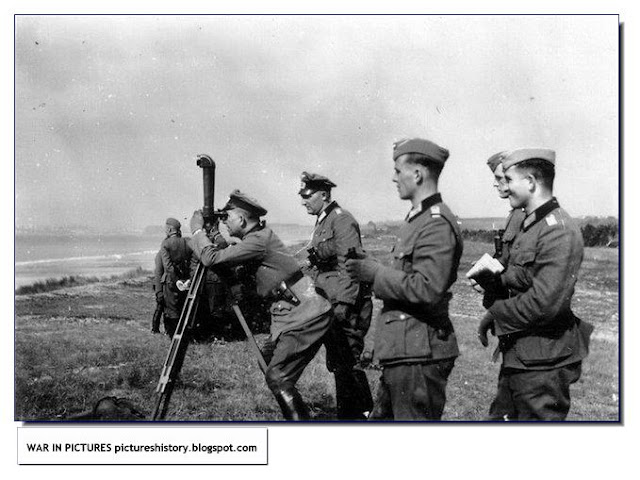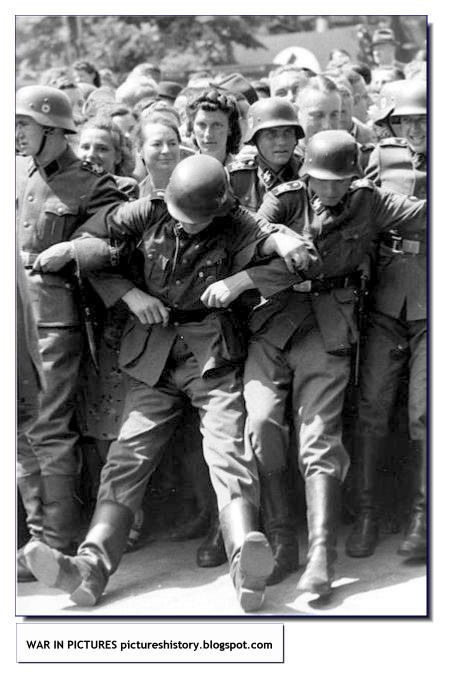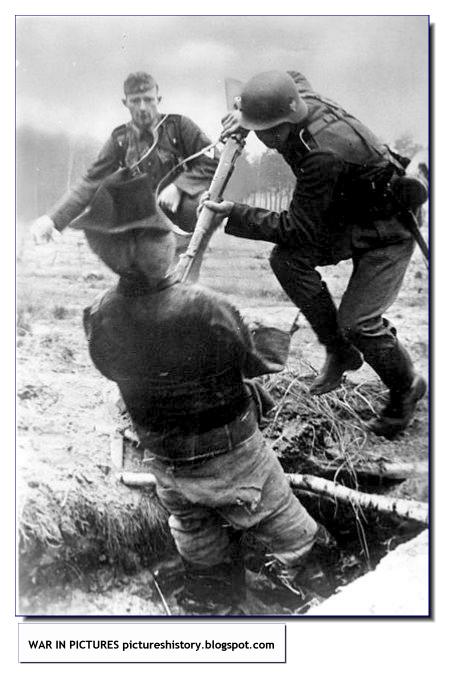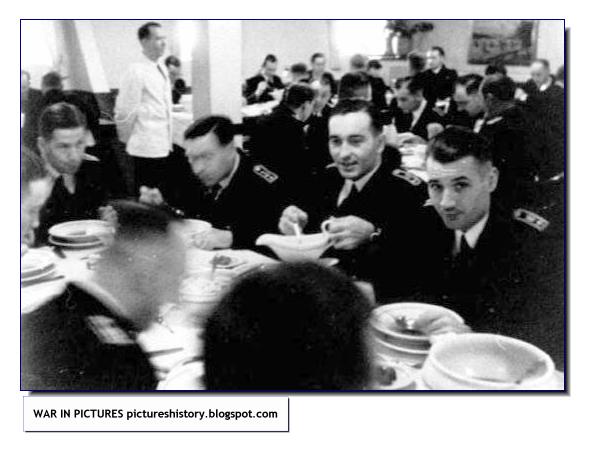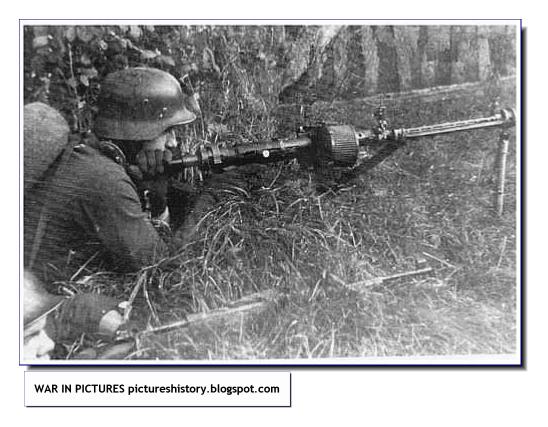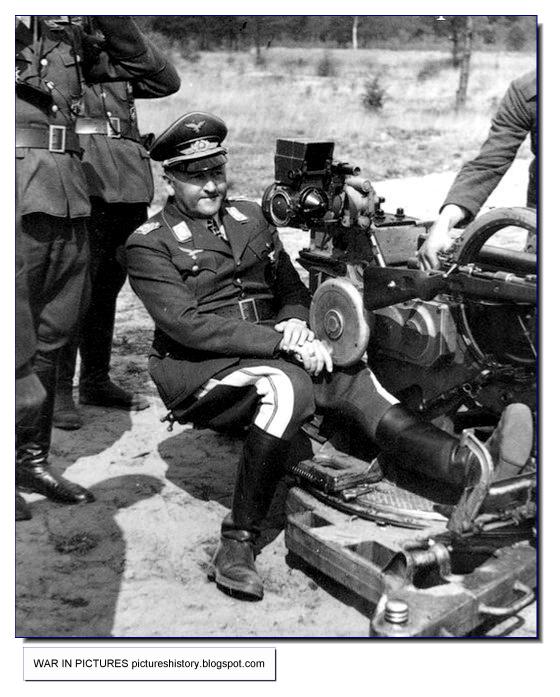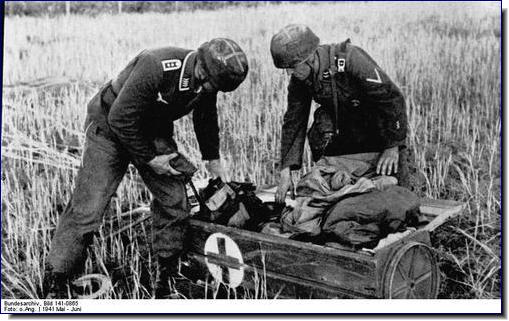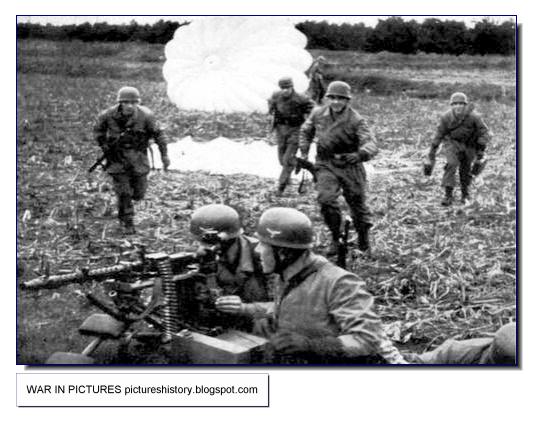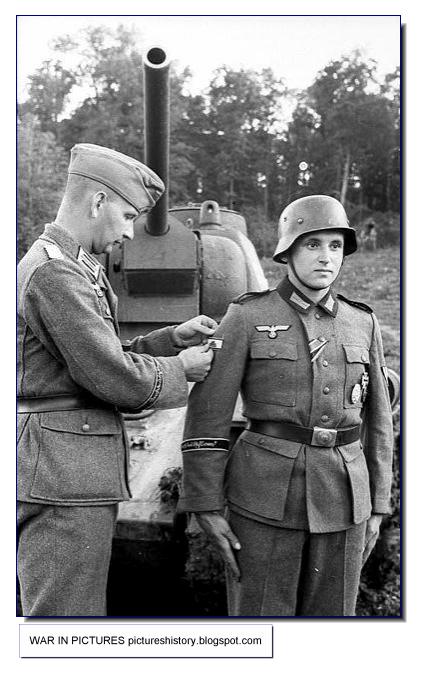Germans with tank destroyers
The Battle of Narva was a military campaign between the German Army Detachment "Narwa" and the Soviet Leningrad Front fought for possession of the strategically important Narva Isthmus on 2 February – 10 August 1944 during World War II.
Gen. Rommel Awards Knight's Cross to Corporal Gunther Halma. North Africa, July 1942.
German soldiers in action during the Ardennes Offensive
A German paratrooper in action
German paratroopers being trained
Freshly minted paratroopers after the training
Tending to the wounded in the Wehrmacht
A Wehrmacht soldier is ready with his MG-34 machine-gun
Michael Wittmann (April 22, 1914 – August 8, 1944) was a German Waffen-SS tank commander during the Second World War. Wittmann would rise to the rank of SS-Hauptsturmführer (captain) and was a Knight's Cross of the Iron Cross holder.
He was credited with the destruction of 138 tanks and 132 anti-tank guns, along with an unknown number of other armoured vehicles, making him one of Germany's top scoring panzer aces, together with Johannes Bölter, Ernst Barkmann, Otto Carius and Kurt Knispel who was the top scoring ace of the war with 168 tank kills.
Wittmann is most famous for his ambush of elements of the British 7th Armoured Division, during the Battle of Villers-Bocage on 13 June 1944. While in command of a single Panzerkampfwagen VI Tiger he destroyed up to 14 tanks and 15 personnel carriers along with 2 anti-tank guns within the space of 15 minutes.
The circumstances behind Wittmann’s death have caused some debate and discussion over the years, but it has been historically accepted that Trooper Joe Ekins, the gunner in a Sherman Firefly, of the 1st Northamptonshire Yeomanry was his killer. However, in recent years, some commentators have suggested that members of the Canadian Sherbrooke Fusiliers Regiment may have instead been responsible
CLICK HERE TO SEE MANY MORE IMAGES OF "WEHRMACHT"
Soldiers of the SS division Prinz Eugen with ZB-53 machine gun (MG 37 (t)
MORE ABOUT ZB-53The ZB-53 was a machine gun used by the Czechoslovak army designated TK vz. 37 ("TK" means "těžký kulomet", heavy machine gun. "vz" means "vzor", Model) and later used by German forces during World War II as the MG 37(t).
It was an belt-fed, air-cooled weapon that served both the infantry support and vehicle weapons roles. The British adopted a version of the ZB-53 as the Besa machine gun for their armoured forces.
In the Sd.Kfz.251
WHAT WAS Sd.Kfz.251?
The Sd.Kfz. 251 (Sonderkraftfahrzeug 251) half-track was an armored fighting vehicle designed and first built by Nazi Germany's Hanomag company during World War II. The largest, most common, and best armored of the wartime half-tracks, the Sd.Kfz. 251 was designed to transport the panzergrenadiers of the German mechanized infantry corps into battle. Widely known simply as "Hanomags" by both German and Allied forces, they were widely produced throughout the war, with over 15,252 vehicles and variants produced in total by various manufacturers
Action in the Leningrad area. 1941
In Narva. 1944Action in the Leningrad area. 1941
The Battle of Narva was a military campaign between the German Army Detachment "Narwa" and the Soviet Leningrad Front fought for possession of the strategically important Narva Isthmus on 2 February – 10 August 1944 during World War II.
Gen. Rommel Awards Knight's Cross to Corporal Gunther Halma. North Africa, July 1942.
German soldiers in action during the Ardennes Offensive
A German paratrooper in action
German paratroopers being trained
Freshly minted paratroopers after the training
Tending to the wounded in the Wehrmacht
A Wehrmacht soldier is ready with his MG-34 machine-gun
The German Tank ace. Michael Wittmann
Michael Wittmann (April 22, 1914 – August 8, 1944) was a German Waffen-SS tank commander during the Second World War. Wittmann would rise to the rank of SS-Hauptsturmführer (captain) and was a Knight's Cross of the Iron Cross holder.
He was credited with the destruction of 138 tanks and 132 anti-tank guns, along with an unknown number of other armoured vehicles, making him one of Germany's top scoring panzer aces, together with Johannes Bölter, Ernst Barkmann, Otto Carius and Kurt Knispel who was the top scoring ace of the war with 168 tank kills.
Wittmann is most famous for his ambush of elements of the British 7th Armoured Division, during the Battle of Villers-Bocage on 13 June 1944. While in command of a single Panzerkampfwagen VI Tiger he destroyed up to 14 tanks and 15 personnel carriers along with 2 anti-tank guns within the space of 15 minutes.
The circumstances behind Wittmann’s death have caused some debate and discussion over the years, but it has been historically accepted that Trooper Joe Ekins, the gunner in a Sherman Firefly, of the 1st Northamptonshire Yeomanry was his killer. However, in recent years, some commentators have suggested that members of the Canadian Sherbrooke Fusiliers Regiment may have instead been responsible
A German officer and the car "Opel Olympia.
CLICK HERE TO SEE MANY MORE IMAGES OF "WEHRMACHT"









